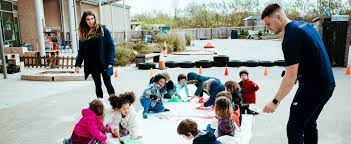Introduction
The concept of wraparound childcare provision has become increasingly essential in today’s fast-paced world. With parents juggling work and family responsibilities, finding a reliable childcare solution is more important than ever before. Wraparound childcare provision ensures a comprehensive and seamless support system for parents, allowing their children to receive care and education at the same time. This article aims to provide an in-depth look at what wraparound childcare entails, its benefits, and how it’s implemented.
Understanding Wraparound Childcare
Wraparound childcare is an all-inclusive approach that combines childcare services with educational programs for children aged 0-12 years old. It provides care for children beyond the traditional school day, including before and after school hours, during school holidays, and even during weekends if required. The main objective of wraparound childcare is to offer a convenient option for working parents while ensuring that their children receive high-quality care.
The Benefits of Wraparound Childcare Provision
1. Accessibility: One of the primary advantages of wraparound childcare is that it caters to the varying work schedules of parents. Traditional child care services may not be suitable for parents who work irregular hours or require additional support outside regular school timings. Wraparound provision addresses this issue by offering flexibility in its scheduling.
2. Continuity: Wraparound childcare allows for a consistent environment where a child can maintain stability in their routines, friends, and learning experiences. This consistency leads to better social skills development, ease of adjustment, and overall wellbeing.
3. Academic Support: Children in wraparound programs may benefit from additional academic support tailored to their unique learning needs. By participating in extracurricular activities and receiving tutoring (if necessary), children can keep up with their peers academically.
4. Peace of Mind: For working parents, knowing that their children are cared for in a safe and supportive environment offers invaluable peace of mind. This trust allows parents to focus on their work and other responsibilities without concern about their child’s well-being.
Implementing Wraparound Childcare
There are several ways that wraparound childcare can be established. Some schools offer their own wraparound programs, while others collaborate with external providers. It is important to research your local area and find the best fit for you and your children.
1. School-based Wraparound Services: Some schools provide wraparound services on-site, employing trained professionals who ensure children remain in a familiar setting. These services may include extended hours, breakfast clubs, or after-school activities focused on academics, arts, sports, and more.
2. External Providers: Many schools have partnerships with registered childcare providers who deliver wraparound services. Parents enroll their children in these programs independently, but the link between the school and provider ensures a cohesive experience for children. Typically, these external providers will also offer holiday clubs or camps during school breaks.
Wrap-up
Wraparound childcare provision offers an invaluable support system for working parents while promoting child development. By identifying the type of wraparound childcare that best suits your family’s needs, you can ensure that your child receives a seamless blend of care and education tailored to their requirements. With the growing recognition of its benefits, wraparound childcare continues to garner attention as an essential resource for parents seeking comprehensive support for their children’s growth and development.





